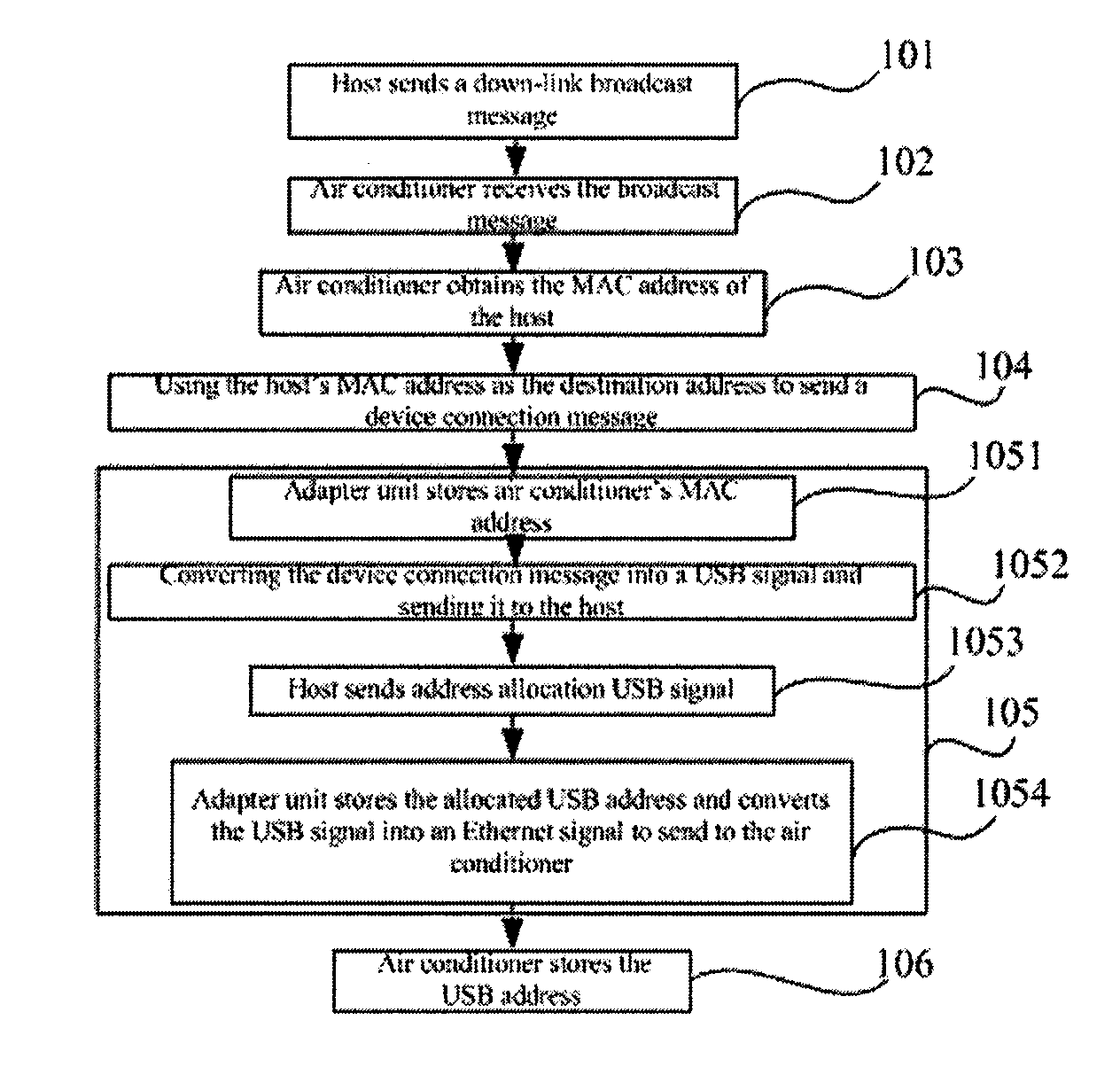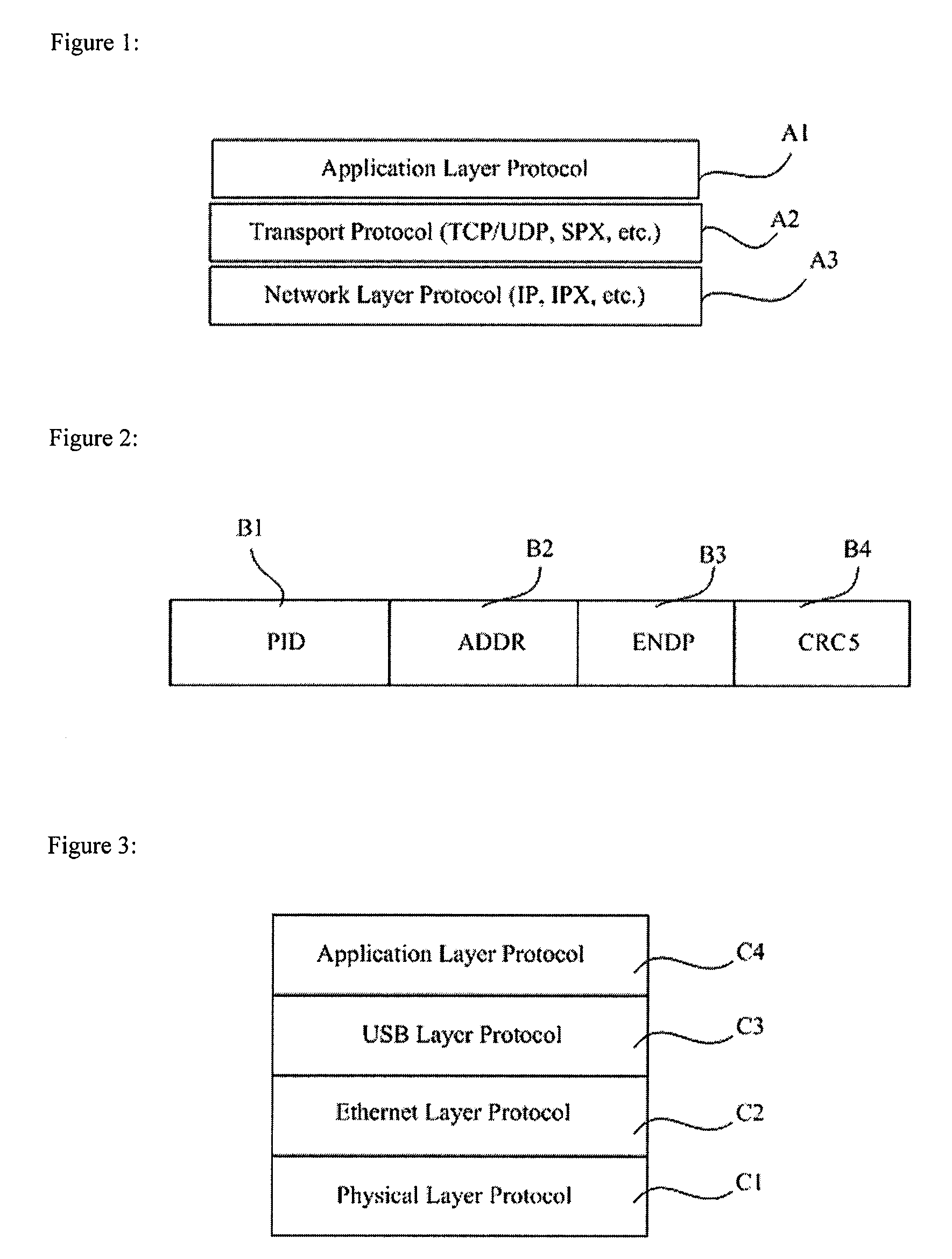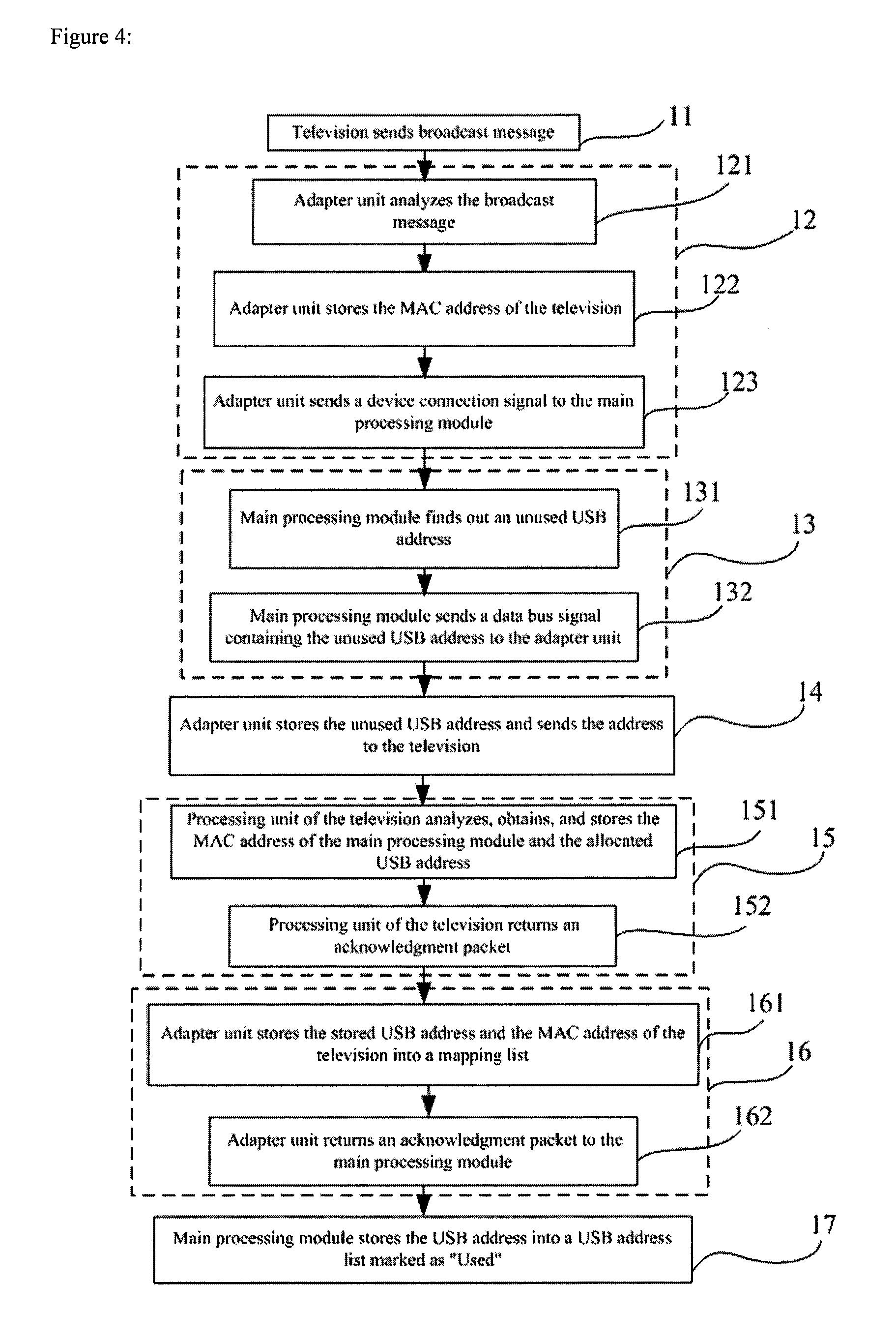Method for assigning address to the intelligent information household appliance and the sub-equipment in the household network
- Summary
- Abstract
- Description
- Claims
- Application Information
AI Technical Summary
Benefits of technology
Problems solved by technology
Method used
Image
Examples
Embodiment Construction
[0051]The communication protocol stack of a home gateway system usually takes the form shown in FIG. 3, which comprises a physical layer protocol C1 as the bottom layer, an Ethernet protocol C2 as the next higher layer, a data bus protocol such as the USB protocol C3 as the third layer, and an application protocol C4 as the highest layer. For the physical layer C1, various connection modes can be used, such as PLC carrier mode, wireless mode, Category 5 cable mode etc., or any combination of these connection modes. The physical layer C1 is used for connecting an intelligent information appliance to an adapter unit. The USB protocol C3 is preferably used as the data bus protocol in one embodiment. The Ethernet layer is mainly used to adapt the low level information and USB protocol layer C3 information to Ethernet information, hide the technical details used by the lower layer from the higher layer, and accomplish some address finding functions based on Ethernet MAC addresses. The US...
PUM
 Login to view more
Login to view more Abstract
Description
Claims
Application Information
 Login to view more
Login to view more - R&D Engineer
- R&D Manager
- IP Professional
- Industry Leading Data Capabilities
- Powerful AI technology
- Patent DNA Extraction
Browse by: Latest US Patents, China's latest patents, Technical Efficacy Thesaurus, Application Domain, Technology Topic.
© 2024 PatSnap. All rights reserved.Legal|Privacy policy|Modern Slavery Act Transparency Statement|Sitemap



